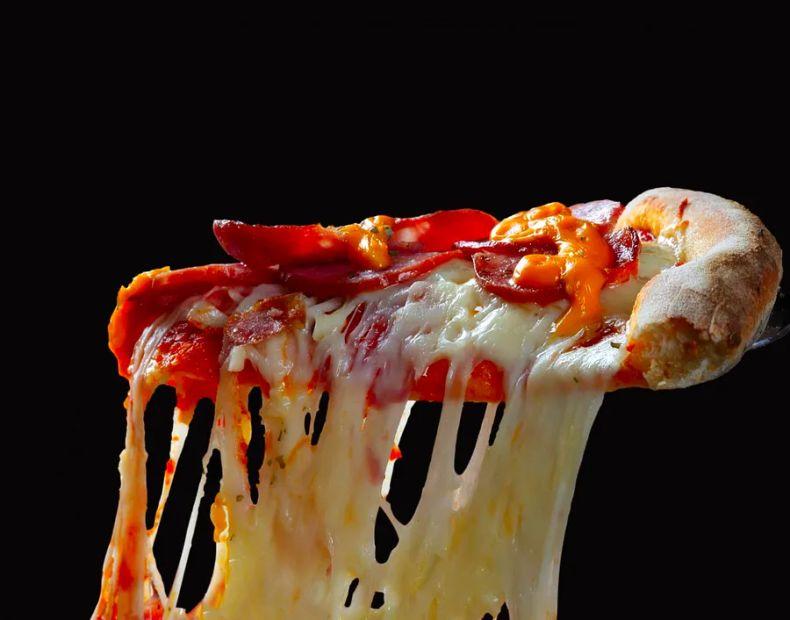Why Do Some Cheeses Melt Better Than Others?

Have you ever tried adding your favorite cheese to an omelette or cheese sauce, only to end up with a dish that's grainy, stringy, or greasy? Sadly, not all cheeses melt in the same way, and choosing the wrong one can ruin your meal (and destroy those Instagrammable cheese pulls).
Why Some Cheeses Melt — And Others Don’t
Moisture: The key to a cheese's melting ability lies in several factors, with moisture being one of the most important. Cheeses with higher moisture content have looser milk proteins that separate more easily when heated. This is why drier cheeses like Parmesan tend to get oily and greasy, while moisture-rich cheeses like Brie melt into a smooth, creamy texture almost instantly.
Fat: Fat plays a big role in how well cheese melts. If you’ve ever tried melting low-fat cheese, you’ve likely noticed how it doesn’t behave the same. This is also true for cheeses that naturally have lower fat content. For example, a high-fat cheese like Leicester melts beautifully, while a lower-fat cheese like Swiss becomes more stringy when heated.
Age: The age of a cheese significantly affects how well it melts. Younger cheeses tend to melt more easily than their aged counterparts. For instance, a fresh cheddar will melt smoothly, while an aged cheddar may not melt as well and can even become grainy or oily when heated.
How it’s made: The production process also influences a cheese’s melting behavior. For example, cheeses that are stretched, like mozzarella and provolone, often become stretchy or oily when heated instead of turning creamy. Great for cheese pulls, but not ideal for creating a smooth cheese sauce.
Acidity: Some cheeses, such as paneer, feta, and ricotta, are simply too acidic to melt well. These cheeses, curdled with acid instead of rennet, are excellent for grilling or frying because they maintain their shape under heat, but they don’t create a smooth melt.
How to Make Cheeses Melt Better
While certain cheeses naturally melt better than others, there are techniques to help melt-resistant varieties, like flavorful cheddar or gruyère, turn into a decadently smooth and gooey sauce.
One method to improve the meltability of cheese is to whisk it into a béchamel sauce, transforming it into a Mornay sauce, the foundation of the ever-popular comfort dish, mac and cheese.
Another technique to help a stubborn melting cheese is to add acid. For instance, incorporating white wine is a traditional method in Switzerland for making cheese fondue.
No matter which cheese you’re trying to melt, always remember to grate it first to avoid over-heating. Grating it allows it to melt faster and more evenly. And avoid the pre-grated stuff—it’s often coated with starch, which can cause it to become grainy when melted.
The Best Melting Cheeses for the Ultimate Cheese Pulls
With that in mind, here are seven of our top picks for the best melting cheeses.
1. Brie
Cheeses with a high moisture content and a bloomy rind, like Brie and Camembert, are almost halfway melted even at room temperature, making them excellent for melting. To achieve a smoother sauce, remove the rind before melting, or bake the cheese whole for a deliciously gooey appetizer, like in this Baked Stuffed Brie recipe.
2. Raclette
Raclette is an Alpine cheese, similar to Gruyère or Comté, with a rich, nutty flavor that borders on brown butter. Unlike these firmer, drier cheeses, raclette is packed with moisture and fat, making it a perfect choice for melting.
The traditional way to enjoy raclette in Switzerland is through a dish of the same name, where the cheese is either melted using a special raclette grill or heated in small pans on an electric grill placed directly at the table. The melted cheese is then poured over potatoes, pickles, and charcuterie for a true Swiss experience.
3. Leicester
While cheddar is often the go-to cheese for dishes like mac and cheese or nachos, its red cousin, Leicester, actually outperforms it in melting. With 35% fat content compared to cheddar’s 32%, Leicester melts more smoothly and easily, making it an ideal choice for creamy dishes.
4. American Cheese
While some may turn up their noses at American cheese, it’s one of the best at melting. The reason many people snub it is actually the secret to its perfect melt: American cheese is made by emulsifying cheese scraps with acids and phosphates, preventing it from clumping or becoming stringy. This makes it the perfect choice for a smooth nacho cheese sauce or a velvety omelette filling.
5. Mozzarella
Mozzarella may not melt the same way as other cheeses on this list, but it reigns supreme when it comes to the cheese pull. Made using the traditional "pasta filata" or string dough method, mozzarella’s milk is processed to form stretchy, elastic strands that are then kneaded into the familiar mozzarella balls. This gives it the signature ability to stretch into long strings when heated, making it a must-have for pizza, Fried Mozzarella Sticks, or a panini with a show-stopping cheese pull.
6. Soft Goat Cheese
Goat cheese, like mozzarella, won’t melt like other cheeses on this list. Because it’s made with acid instead of rennet, goat cheese tends to maintain its shape and can become grainy when heated. However, the moisture in young goat cheeses helps them melt more easily. Stir a bit of fresh goat cheese into hot pasta for a rich, creamy sauce that’ll impress.
7. Gorgonzola
Gorgonzola comes in various ages and textures, but the creamy, soft variety known as gorgonzola dolce is particularly rich in fat and moisture. With a texture that’s already partially melted, this cheese is perfect for creating a luxurious Gorgonzola Cream Sauce to drizzle over meats or stir into a flavorful risotto.
5 Common Mistakes That Could Be Ruining Your Grilled Cheese Sandwich
This Simple Bread Switch Takes Your Grilled Cheese from Good to Great
The Best Cheeses for Crafting the Perfect Grilled Cheese Sandwich

1

2

3

4

5
Evaluation :
5/5